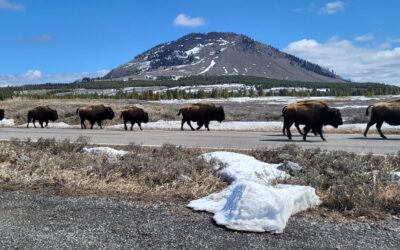As I tell everyone these days -Â don’t limit yourself to just one tool.
I was introduced to this one some years ago and it hasn’t really been until recently I’ve started “re-exploring” OpenJump. I spend a lot of time talking about QGIS and other things (and I have more other things to talk about).  So 1.8 was released back in December 2014. I’ve been playing with this release as a front end to postgis/postgresql.
For those of you who were (are) still fans of the old ArcView 3.x release – we’ve got multiple windows. I chuckle at how revolutionary that has gotten…again…after what…..20+ years?
From the OpenJump Wiki:
- It is a Vector GIS that can read rasters as well
- OpenJUMP is known to work on Windows, Linux and Mac platforms, but should work on any operating system that runs Java 1.5 or later.
- It is not just another free demo viewer, but you can edit, save, analyze etc. with JUMP / OpenJUMP
- It works, even with medium size datasets, and with professional touch
- It provides a GIS API with a flexible plugin structure, so that new features are relatively easy to develope around the sound mapping platform.
- It utilizes OGC standards like SFS, GML, WMS and WFS
- It is already translated in English, Finnish, French, German, Italian, Portugese and Spanish. The translation in other languages is in progress.
- ..and it is free (under the GPL license).
In short you can:
- Do everything you would want to do in the way of buffering, clipping, and intersecting.
- Perform Topology checks.
- It has the Sextante Geoprocessing toolbox built in
- Great amount of other editing/geoprocessing tools
- Capability to extend functionality through plugins.
It runs on Windows, Linux, and Mac….or is that OSX…..eh – whatever – it runs on about everything that Java will – because it’s Java Based.
I’ve been working the Intro to QGIS class in OpenJump:
- Add a file using the “open folder” icon. Just hover your mouse over an icon to get a description.
- Right click on the layer and Change Styles to something more eye pleasing.
- Â Go to Tools -> Analysis -> Buffer and You have a buffer (that you have to save to a physical file with “Save Dataset as….”
Note the formats you can save…notice the formats you can ingest: It’s all (mostly) OGC compliant. So if you do something worthwhile here you can dump it to QGIS or ArcGIS.
Things to also note:
- It will print – but you’re not going to make the next cartographic masterpiece
- I crashed it a couple of times on Ubuntu adding imagery, Haven’t tried it on Windows 7 yet.
- Reprojecting requires a plugin – so make sure all your data is in the correct projection
- It works in a “grouping” type of layout. Anything you do processing wise will go under a group (like System) and will require you to save it.
Anyway – expose yourself to something new. Gain some flexibility. Download OpenJump and play around with it. You might find it useful.




